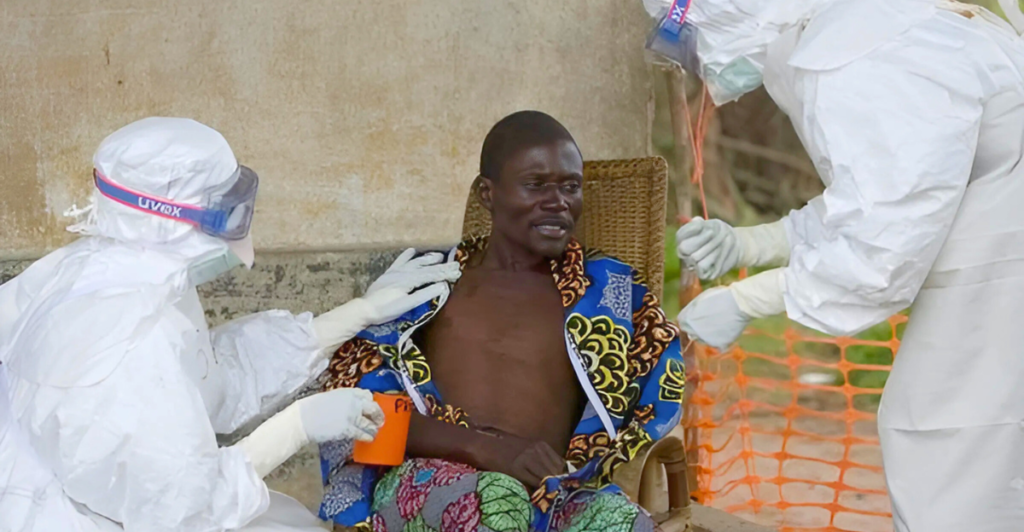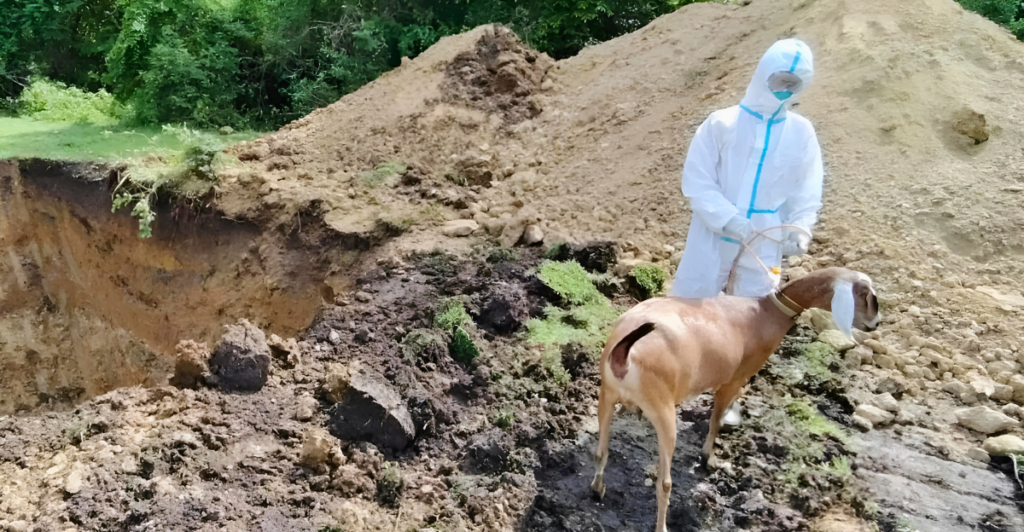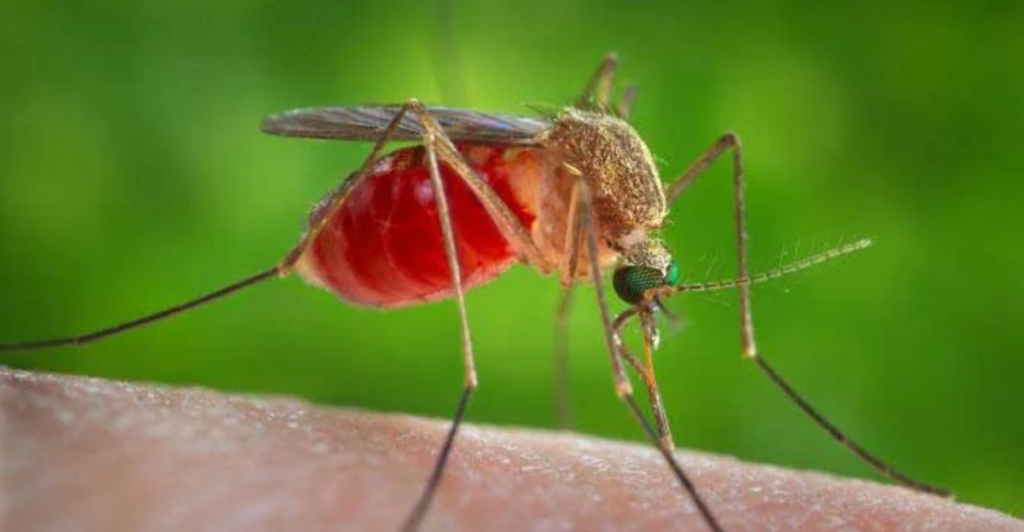
Diseases that jump from animals to humans, known as zoonotic diseases, pose a significant threat to global health. These illnesses often arise from close interactions with animals, whether through farming, food consumption, or environmental exposure. Some zoonotic diseases have caused devastating pandemics in human history, while others remain potential risks due to their ability to mutate or spread across populations. Let’s take a look at the top twelve worst animal diseases that could jump to humans.
1. Avian Influenza (Bird Flu)

Avian influenza, particularly the H5N1 strain, is a highly pathogenic virus that poses a significant threat to human health. It has a mortality rate of 53-56% in infected individuals, making it a severe concern for public health. The virus primarily spreads from wild birds to poultry but has the potential to mutate, increasing its ability to transmit between humans. Symptoms in humans include fever, cough, sore throat, muscle aches, and, in severe cases, respiratory distress and pneumonia. Recent cases in the United States have resulted in mild respiratory symptoms and conjunctivitis (pink eye). Early treatment with antiviral medications such as oseltamivir (Tamiflu) or zanamivir (Relenza) can help manage the infection and improve outcomes. The combination of its high mortality rate and potential for human-to-human transmission underscores the importance of monitoring and controlling avian influenza outbreaks.
2. Rabies

Rabies remains a serious zoonotic threat, nearly always fatal once symptoms appear, with a 100% mortality rate if left untreated. The virus is primarily transmitted through bites from infected animals, with dogs being the main source in developing countries and bats being the primary carriers in the United States. Symptoms of rabies include fever, headache, excessive salivation, muscle spasms, paralysis, and mental confusion. The incubation period varies, ranging from two weeks to several months, depending on factors such as the location of the bite and the viral load. Despite its severity, rabies is preventable through prompt post-exposure prophylaxis and vaccination, which are highly effective when administered shortly after exposure.
3. Ebola Virus Disease

Ebola is a severe hemorrhagic fever known for causing outbreaks with high mortality rates, ranging from 25% to 90%, depending on the outbreak. The virus is transmitted through contact with the bodily fluids of infected animals, such as bats and primates or humans. Symptoms begin with sudden fever, fatigue, muscle pain, headache, and sore throat and can progress to vomiting, diarrhea, and, in severe cases, internal and external bleeding. While there is no specific cure for Ebola, early supportive care, including hydration and treatment of symptoms, significantly improves survival rates. Vaccines have been developed and successfully used to control outbreaks in some African countries, offering hope for better prevention and management of this deadly disease.
4. Nipah Virus

The Nipah virus is a significant public health concern due to its high mortality rate and potential for human-to-human transmission. It can infect a variety of species, including humans, pigs, cats, dogs, goats, and horses. Mortality rates for Nipah virus infections range from 40% to 75%, depending on the outbreak and healthcare access. Symptoms often begin with fever, headache, and respiratory issues but can progress to severe complications such as encephalitis and coma. The virus is transmitted through close contact with infected animals, consumption of contaminated food, or direct human-to-human spread. Currently, there is no specific treatment for Nipah virus infection; management is limited to supportive care, making prevention and early detection critical in mitigating its impact.
5. Hendra Virus

Hendra virus, closely related to Nipah virus, poses significant risks to both animals and humans. It primarily affects horses but can be transmitted to humans, often with fatal consequences. The natural reservoir for the virus is fruit bats, commonly known as flying foxes. In humans, the infection typically begins with flu-like symptoms and can progress to severe respiratory or neurological disease. To date, only seven human cases have been reported, all in Australia, with a high fatality rate. A vaccine is available for horses, which plays a crucial role in reducing the risk of transmission to humans, highlighting the importance of preventive measures in managing this zoonotic threat.
6. Crimean-Congo Hemorrhagic Fever (CCHF)

Crimean-Congo Hemorrhagic Fever (CCHF) is a tick-borne disease with a widespread geographical distribution, being endemic in regions such as Africa, the Balkans, the Middle East, and Asia. The virus is transmitted through bites from infected ticks or contact with the blood of infected animals. Symptoms typically include sudden onset of fever, muscle aches, dizziness, and neck pain, which can escalate to severe hemorrhaging in advanced cases. The disease has a mortality rate ranging from 10% to 40%, depending on the outbreak and available medical care. Treatment focuses on supportive care, and the antiviral drug ribavirin has shown some efficacy in managing the infection.
7. Bovine Spongiform Encephalopathy (Mad Cow Disease)

Bovine Spongiform Encephalopathy (BSE), commonly known as mad cow disease, is a fatal neurodegenerative disorder caused by abnormal prion proteins in brain tissue. In humans, consumption of beef products contaminated with these prions can lead to variant Creutzfeldt-Jakob disease (vCJD), a rare but fatal condition. In cattle, BSE symptoms include behavioral changes, difficulty walking, and weight loss. The disease has a long incubation period in humans, with symptoms often appearing years after exposure. There is no cure for BSE or vCJD, and both are invariably fatal once symptoms manifest. This underscores the importance of strict measures to prevent prion contamination in the food supply.
8. Plague

The plague, caused by the bacterium Yersinia pestis, remains a public health concern due to its potential for outbreaks. It manifests in three main forms: bubonic, septicemic, and pneumonic. The disease is typically transmitted by fleas from infected rodents or through direct contact with infected animals. Symptoms include sudden onset of fever, chills, headache, and painful, swollen lymph nodes known as buboes. While the plague is treatable with antibiotics if diagnosed early, its historical impact is significant, having caused devastating pandemics such as the Black Death, which claimed millions of lives.
9. Q Fever

Q fever is a bacterial infection caused by Coxiella burnetii, primarily affecting livestock such as sheep, goats, and cattle. Humans can contract the disease by inhaling contaminated aerosols or dust, often in farming environments. Symptoms can range from mild flu-like illness, including fever and fatigue, to severe complications, such as endocarditis, which can be life-threatening. In some cases, Q fever can become chronic, leading to long-term health issues. While the infection is treatable with antibiotics, diagnosis can be challenging due to its non-specific symptoms, emphasizing the need for awareness in at-risk populations.
10. Lyme Disease

Lyme disease, a tick-borne illness caused by the bacterium Borrelia burgdorferi, is becoming increasingly prevalent. It is transmitted to humans through the bite of infected ticks, primarily the black-legged tick. Early symptoms often include a distinctive “bull’s-eye” rash, fever, fatigue, and joint pain. If left untreated, the disease can progress to severe complications affecting the heart, joints, and nervous system. Lyme disease is highly treatable with antibiotics, particularly when diagnosed early. Preventive measures, such as avoiding tick-prone areas, using protective clothing and repellents, and promptly removing attached ticks, are essential for reducing the risk of infection.
11. Brucellosis

Brucellosis is a bacterial infection transmitted through contact with infected animals or the consumption of unpasteurized dairy products. Symptoms commonly include fever, joint pain, and fatigue, and the infection can become chronic or recurrent in some cases. If left untreated, brucellosis can affect various organs and lead to severe complications. While the disease is treatable with antibiotics, it requires a prolonged course of treatment for effective recovery. Prevention focuses on implementing proper food safety practices, such as avoiding unpasteurized dairy and using protective equipment when handling animals to reduce the risk of infection.
12. Rift Valley Fever

Rift Valley Fever is a viral disease with significant potential for outbreaks, affecting both animals and humans, particularly in Africa and the Middle East. The virus is primarily transmitted by mosquitoes and through direct contact with infected animal tissues. In humans, symptoms range from mild flu-like illness to severe cases of hemorrhagic fever. There is no specific treatment for Rift Valley Fever; management focuses on supportive care to alleviate symptoms, emphasizing the importance of preventive measures to control its spread.
Discover more of our trending stories and follow us to keep them appearing in your feed

10 Easy Ways To Stop A Charging Dog
12 Dog Breeds That Stay Puppy-Sized Forever
Zombie Deer Disease Continues To Grow Putting Hunters At Risk In These States
Diseases You Mightn’t Know Are Transferred By Our Furry Friends
Source:
Animal Diseases that Belong in a Horror Movie
Stay connected with us for more stories like this! Follow us to get the latest updates or hit the Follow button at the top of this article, and let us know what you think by leaving your feedback below. We’d love to hear from you!







